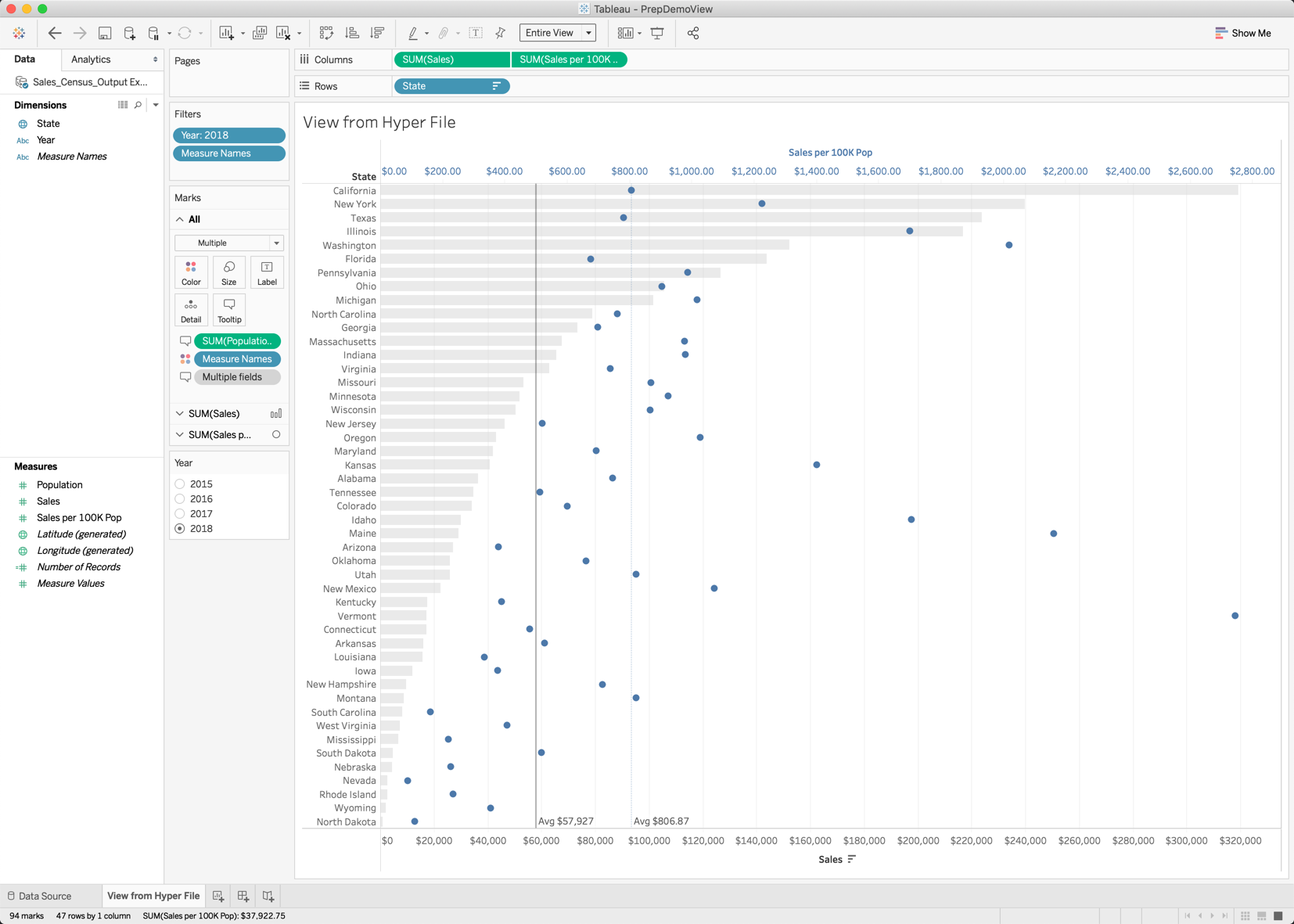In this series, Tableau Zen Master Dan Murray takes a closer look at the Tableau Prep Builder and Conductor tools, their power and scope and how they stack up against other ETL tools.
In the last four blog posts in this series, we created an 18-step workflow that provides a hyper extract file. I’m going to test my set by building a view in Tableau Desktop. While I could just publish the flow and use an output file as my starting point, I’m going to use the last cleaning step in the flow to launch Tableau.
Of course, the whole point in creating the workflow using the Superstore data with the Census data was to normalize sales by State for the population in each state. Now that we’ve confirmed the dataset is complete and contains the data we need to build views, we want to Create:

In the next post in this series, I’ll show you how to publish your workflow to Tableau Server. We’ll also discuss how you can use the Tableau Data Management add-on to Tableau Server to automate workflow runs to refresh data sources that you are curating to your Tableau Server users.

